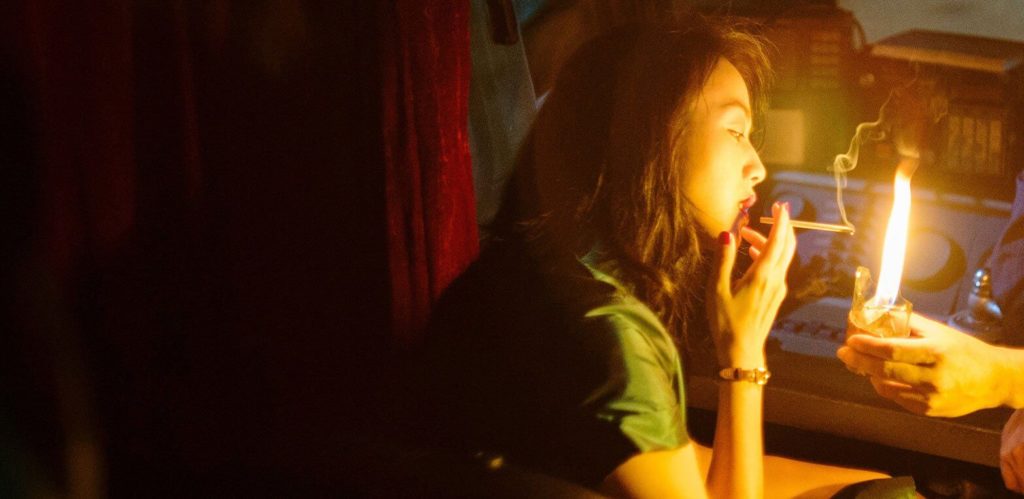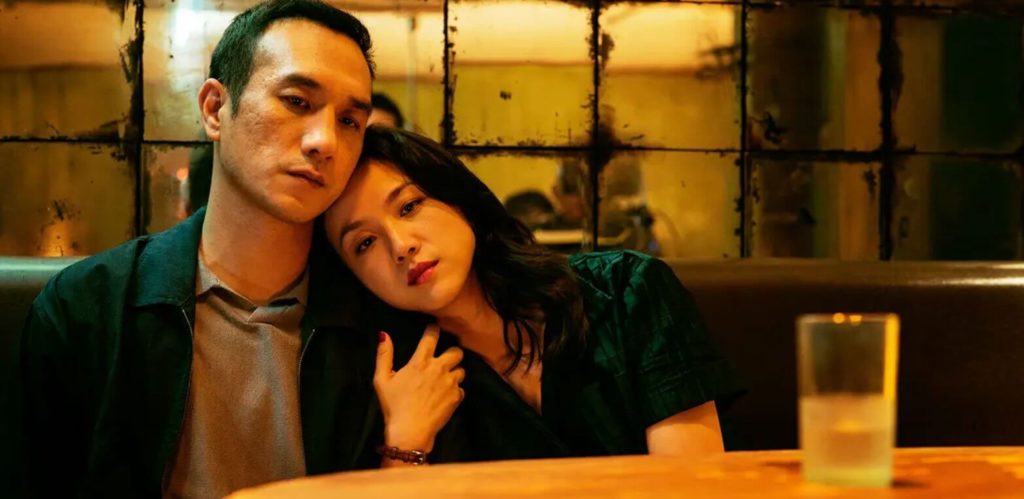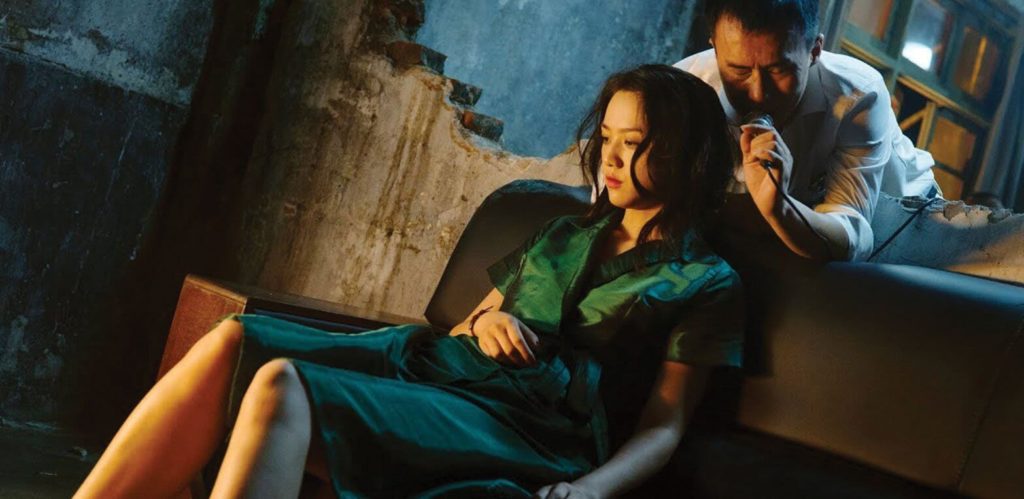|Natalie Marlin|

Long Day’s Journey Into Night plays at the Trylon Cinema from Sunday, February 18th, through Tuesday, February 20th. Visit trylon.org for tickets and more information.
I know I’ve felt like this before
But now I’m feeling it even more
Because it came from you
Then I open up and see
The person falling here is me
A different way to be
—“Dreams,” The Cranberries
When we dream, unconscious shapes fill in the blanks.
Vague visages that recall someone we know, or perhaps the half-formed images of blurry memories—those specters of past days, buried, submerged, just waiting for free association to emerge—fill what is otherwise vacant.
In my dreams, I find those I know—or once knew—occupy the necessary spaces. I chat with an old friend I haven’t seen in years. An acquaintance I’ve only ever known tangentially inexplicably becomes a lover. I catch a glimpse of a face at a party, and—for the briefest moment—it takes the form of a past version of myself, long dead, but still dormant in the recesses of my mind.
Our dreams are filled with the presence of others, but these dreams tell us more about ourselves than the figures who occupy them. We, or at least a subconscious version of ourselves, remain at the center of each dream; others exist within it as extrapolated interpretations of what they mean to us. These others are idealized, or embellished. Their virtues are heightened, their flaws are all-consuming.
Our repressed hopes breathe unfettered. Our fears live on unimpeded. Unchecked, each side of the coin holds its own perils, like too much of anything.

Bi Gan is a filmmaker fixated on memory and all that surrounds it. In his most prominent recurring themes—time, discontinuity, confrontations with the past via the uncanny—there emerges a thread of how we reckon with our own memories, as warped and subjective and misinformed as our deeply personal interpretations of them may be. Memories, like all surfaces, lose their clarity and sheen over time. Time plus memory is a haze. We pull the most vivid details—the ones that sear us sharpest—from the memory, and the rest around it fades. We cling onto what we feel is most relevant, though the context surrounding that memory is just as vitally so.
In Long Day’s Journey Into Night, the core memories—when we arrive at the film’s most grounded temporal present—are all pure subjectivity. Our protagonist Luo (Huang Jue) finds himself unable to shake memories of a woman from his past named Wan (Tang Wei), who has vanished. But the memories he holds, inherently, are limited to his own perspective on her. All he knows are the moments he has shared with her, and what little she has chosen to reveal of herself to him. He has no scope beyond his own restricted insight into what Wan is like, her interiority locked away. And though he spends the first half of the film searching for her, Luo can never truly understand this woman whose memory haunts him, because she is never to be seen again.
This is a core facet of Bi Gan’s structural intent of the film: we never see Wan outside of these memories. The very first words of the film are about Wan, but describing her as a woman who appears only in Luo’s dreams—described as an idolization rather than a person. She occupies the archetypal role of “the woman vanished”—gone before the picture has even begun, all but absent from the present tense of the film. But this role is an extension of the film’s larger themes of memory’s elusiveness, and the notably gendered ways in which memory is fallible.1 Because these memories are Luo’s, there is always the unspoken fact that our glimpses of Wan are those of the idealized image a man has of a woman from his past. He chases these afterimages not in pursuit of Wan as she exists in the present, but an attempt to restore a past image that has long since faded.
What Long Day’s Journey Into Night understands best is that dreams are merely extensions of memory. In the film’s back half, the rhythms of Luo’s present search for Wan intermingled with his memories gives way to a new form entirely: a single take lasting a full hour, as Luo drifts off into a dream, and his subconscious desires and internal confrontations with the past become his new reality, literally and figuratively. Here, Wan is all but completely gone, but Luo finds a lookalike in Kaizhen (also played by Tang Wei), and projects all that he felt for Wan onto her.
In the dream, Luo finds what he cannot in reality. In the dream, Luo closes all the loose ends that frayed beyond repair in reality. In the dream, Luo saves all he could not in his past.

Bi Gan’s films hold the bones of several of his predecessors and contemporaries: the tranquil pace, verdant landscapes, and whispers of folk legend in Kaili Blues bring to mind Apichatpong Weerasethukul’s Uncle Boonmee Who Can Recall His Past Lives; in Long Day’s Journey Into Night, the neon-soaked neo-noir whose structure defies traditional shapes or beats bears several—albeit, more dreamlike—similarities to the films of Diao Yi’nan, whose cinematographer Dong Jinsong is one of three credited on this film.
But it’s Wong Kar Wai’s work that hovers over Long Day’s Journey Into Night most of all. Though Wong’s films are much more grounded in archetypical cinematic and temporal reality than the slipstream of Bi Gan’s elliptical style, their images reverberate in the cathode-coated landscapes that litter Long Day’s Journey Into Night, and their themes of unfulfilled desire and lingering remorse for one’s past feel cut from the same cloth.
Chungking Express, Wong’s 1994 meditation on longing and time, also takes on a bifurcated structure, jumping to a second narrative midway through the film, tethered by location and conceptual symmetry. In this second narrative, Faye (Faye Wong), too, is gripped by the prospect of dreams, so much so that her music habits gravitate around the word—primarily, in her fixation on The Mama and the Papas’ “California Dreamin’,” as well as Faye Wong’s own Cantonese cover of The Cranberries’ “Dreams.”
Dreams are often more figurative than literal in Wong Kar Wai’s films, but they hold the same significance—extensions of wants, regrets, and the urge to change the trajectory of your life. In the idyllic realm of dreams, after all, any outcome is possible, regardless of what possibilities may be closed off in our waking lives.

In my search for you
I’ve made my new home in the eyes of a bird
– Chen, Kaili Blues
Where Long Day’s Journey Into Night hews to dreams, Bi Gan’s first feature Kaili Blues keeps closer to time as its primary means of exploring memory.2 Its long take occurs in a state of full wakefulness, where its protagonist Chen (Chen Yongzhong, also appearing as a controlling gangster in Long Day’s Journey Into Night) finds himself caught in a seemingly impossible rift in time, with figures from his present aged ahead several years, and doppelgangers from his past inexplicably present. In its perpetual recursions, time becomes a vessel for memories to resurface, as if brought to life once again, in wholly new forms.
At the end of Kaili Blues, Chen returns home, leaving behind the nephew he ventured out to find—his journey, ultimately, revealing more about himself and the past he has tried to keep at bay. But we never see him return to his home in Kaili—the last we see is him asleep on the train back, as another train passes with clocks drawn on each car, arranged so each passing carriage makes the hands turn back time. The film ends before Chen wakes—lost in the dream, falling back into the past. Perhaps he never learns from his encounters with the past, and is doomed to carry it with him, eternally, time perpetually looping back in on itself. No matter how far the clocks go forward, for Chen, they will always roll back.
Long Day’s Journey Into Night has its own mirror of this ending—as if a dreamlike bout of déjà vu. In the absence of Wan, Luo follows Kaizhen through the dreamscape of the film’s long take until they arrive at a house that resembles one in an urban legend Luo and Wan were drawn to—where a lovers’ spell can cause the house to spin. They recite the spell, find that the house spins, and kiss. And this is the last we ever see of Luo.
There is no need to revisit Luo’s waking reality, because we have already come to our own foregone conclusions: maybe Wan has vanished from his life forever, and his search for her is wholly in vain. Or perhaps he does find her after the dream ends, but his chance to rekindle what may have once been there is long gone. Or, alternatively, maybe his memories never really did tell the full story, and there was never a chance to rekindle a romance, because he was at least part of the reason Wan was driven away.
In a way, Long Day’s Journey Into Night ending still in the dream tells us that the reality of Luo’s story has long since ended. If we never see Luo wake up, perhaps he never does. Perhaps he, too, remains lost in the dream.
- Of note is that one of Wan’s first appearances in the film sees Luo forcibly yanking by her hair in frustration. From even the film’s earliest stretches, Bi Gan plants the reading that Luo’s visions of his time with Wan are far from a perfect romance that holds any promise of being rekindled. ↩︎
- Time carries a similar, if slightly diminished, symbolic weight in Long Day’s Journey Into Night, mostly in the form of broken clocks and watches, a recurring motif whose significance primarily rests in Luo attempting to gift Kaizhen a broken watch. He is informed that he should not be gifting this, as it represents eternity and is broken. Here, the readings are twofold: Luo is gifting a broken promise, or Luo passing along a static eternity in the confines of the dream. ↩︎
Edited by Finn Odum
